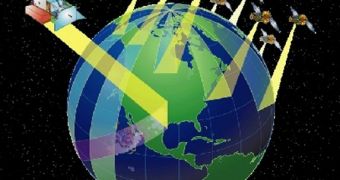The critical elements of the American space agency's Global Precipitation Measurement (GPM) mission have been accepted following a major review on December 2. NASA is currently engaged in efforts with the Japanese space agency JAXA to create a network of advance global precipitation observation satellites, which could provide geologists and planetary scientists with new information related to the way water moves through the Earth systems, including the atmosphere.
“This joint NASA/JAXA mission is scientifically important and stands as a prime example of the power of international cooperation in Earth observations. GPM's global precipitation measurements will advance our abilities to monitor and accurately predict precipitation on a global basis,” Michael Freilich, who is the director of the NASA Earth Science Division, explains.
“GPM builds on the strong scientific and technical collaborations developed between NASA and JAXA. GPM instruments will also provide key calibration references to allow measurements from a wide variety of other satellite missions, including those from other US and international organizations, to be combined to provide accurate predictions and global data sets,” the American expert says.
NASA and JAXA have collaborated on previous flights before, including on the Tropical Rainfall Measuring Mission (TRMM). The two agencies are now willing to build on that success again, but this time with additional involvement from a number of international partners. Scientists say that, once the new satellite is operational, it would be capable of providing precipitation measurements for scientists every two to four hours. At the core of the new observatory, experts will place a Dual-frequency Precipitation Radar (DPR), alongside a multi-channel GPM Microwave Imager (GMI) instrument.
JAXA's Tanegashima launch site is scheduled to host the launch event of the new GPM Core Observatory, which is set at this point to take place around July 2013. The two space agencies say that the satellite will be delivered to its orbit aboard an H-IIA vehicle, the workhorse of the Japanese space fleet. Throughout its life cycle, experts estimate, the GPM project will cost in the vicinity of $978 million. The entire mission will be managed by experts at the Goddard Space Flight Center, ScienceDaily reports.

 14 DAY TRIAL //
14 DAY TRIAL //